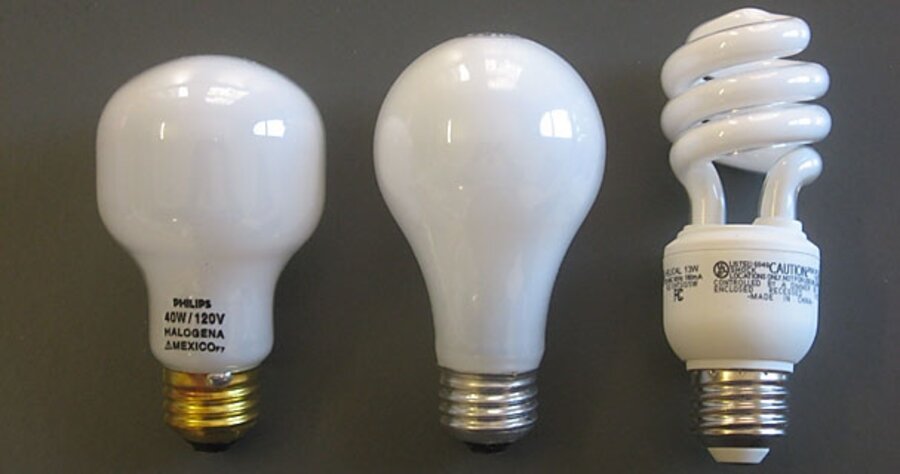EU bans incandescent light bulbs
Loading...
Beginning in 2010, the light bulbs in European sockets will be doing a lot less incandescing and a lot more fluorescing.
Meeting last week in Luxembourg, European Union energy ministers agreed to ban filament light bulbs across all 27 member states. The decision comes just a few days before the EU will lift duties on energy-efficient bulbs imported from China, a move that is expected to bring down their prices.
Last year, Australia became the first country to enact an outright ban on incandescents, which will take effect in 2010. They were followed by Cuba, who apparently sent youth brigades into people's homes to swap out the bulbs for more energy-efficient ones, and the Philippines, which announced plans to phase them out by 2010.
In the United States, the Energy Independence and Security Act, passed in June 2007 requires roughly 25 percent greater efficiency for light bulbs, phased in from 2012 through 2014. This effectively bans incandescent bulbs.
The most common types of energy-efficient bulbs, known as compact fluorescent lamps or CFLs, use between one-fifth and one-third of the power of equivalent incandescent bulbs. According to the conservation group WWF, who praised the decision, the switch will help reduce domestic energy consumption for lighting by 60 percent in the EU, equivalent to some 30 million tons of CO2 annually. (The EU emits about 4 billion tons of CO2 each year.)
But CFLs are not without their critics. Many complain that the light is harsher and more flickery than that emitted by incandescent bulbs, that they take longer to turn on, and that they don't work well with dimmer switches.
Most troubling for green-minded consumers, the bulbs contain about 5 milligrams of mercury, a toxic substance that can escape from the bulb if it is broken. While many of the fears of broken CFLs are overblown – they do not, as one news article claims, require an environmental cleanup crew – experts advise that you open your window and let the room air out for at least 15 minutes, and then put on disposable gloves before you clean up the broken bulb.
As Popular Mechanics points out, an incandescent bulb powered by a coal-fired plant (the kind that generates half of US electricity) releases more mercury into the air than a broken CFL.
The mercury in the bulbs also presents a problem for disposal. Putting mercury into a landfill is a bad idea, as the stuff can leach into groundwater. Instead, the bulbs should be taken to a local hazardous waste disposal center.
Others are criticizing the mandates for different reasons. Blogger Mike Masnick argues that the ban could make CFL makers complacent.
Already, there's been a big push to move people to CFLs, and that's created a situation where the makers of CFLs have worked hard to improve the quality of the bulbs (a big complaint) as well as add in features that used to not be found in CFLs, such as dimming. It's also pushed the makers of CFLs to find efficiencies by which they can make the bulbs cheaper. They're doing this because they know they need to compete with incandescent bulbs -- and in many cases it's working.
Yet, banning incandescents from the market place means that the makers of CFLs now have a lot less competition. They don't have to work as hard to make the lights better. They don't have to work as hard to make them more efficient and cheaper. They've basically been given a gift that means they can slow down the process of making those bulbs that much better for the environment. That seems like a mistake.
Others, such as the New Scientist's Debora MacKenzie, call the ban's emissions reductions "a drop in the bucket," pointing out that the 30 million tons of CO2 saved would be equivalent to only about half the total emissions of Sweden.
But 30 million tons is still something, and switching from filament bulbs to CFLs is a relatively painless move that will save Europeans money in the long run. And perhaps just as important, replacing the traditional bulb – an icon of the industrial era – with the curlicue fluorescent bulb signals a commitment, however symbolic, to move away from dirty 19th-century technology (a category that also includes coal plants and gasoline-powered engines) and toward a more energy-efficient future.





